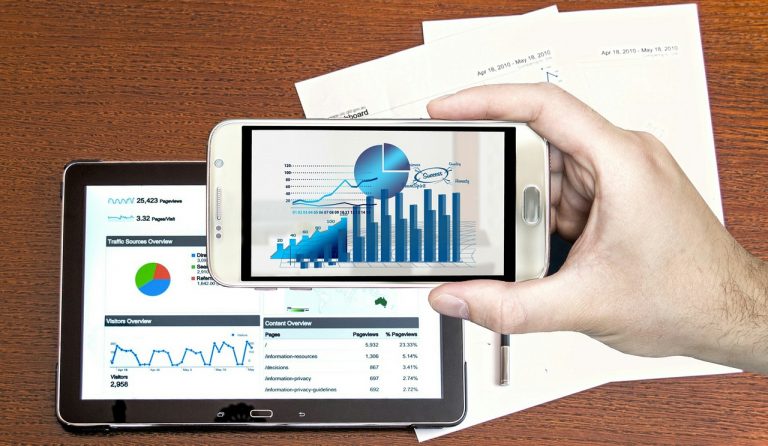Leveraging Trends in Project Management Tools and Automated Data Use for Greater Efficiency
In today’s fast-paced business environment, staying ahead in project management requires not only traditional skills but also a keen understanding of emerging tools and technologies. Among these, the trend towards advanced project management (PM) tools and automated data use is transforming how projects are planned, executed, and monitored. This article explores the latest trends in PM tools and automated data usage, and provides actionable tips on how to use these innovations effectively to drive project success.
The Rise of Advanced PM Tools and Automated Data Use
- Sophisticated Project Management Platforms:
- All-in-One Solutions: Modern PM tools offer comprehensive platforms that integrate various functionalities, such as task management, time tracking, resource allocation, and collaboration features. Examples include Asana, Monday.com, and Microsoft Project.
- Customizable Dashboards: These tools provide customizable dashboards that offer real-time visibility into project metrics, progress, and performance indicators, allowing project managers to track and manage multiple projects efficiently.
- Automation of Routine Tasks:
- Automated Scheduling: PM tools now feature automated scheduling capabilities that adjust timelines based on changes, dependencies, and resource availability. This reduces manual intervention and helps keep projects on track.
- Task Automation: Automation extends to task assignment, notifications, and status updates. For example, tasks can be automatically assigned based on predefined rules, and notifications can be sent to stakeholders when milestones are achieved or issues arise.
- Data-Driven Insights and Reporting:
- Real-Time Analytics: Advanced PM tools leverage data analytics to provide real-time insights into project performance, trends, and potential risks. This enables project managers to make informed decisions based on accurate and up-to-date information.
- Automated Reporting: Automated reporting features generate comprehensive reports on project status, financials, and resource utilization with minimal manual input. This streamlines reporting processes and ensures timely delivery of critical information.
- Integration with Other Tools:
- API Integration: Many PM tools offer APIs and integrations with other software, such as CRM systems, financial management tools, and communication platforms. This connectivity ensures seamless data flow and enhances overall project coordination.
- Collaboration Tools: Integration with collaboration tools like Slack, Teams, or Zoom enhances communication and coordination among project teams, facilitating real-time discussions and file sharing.
- AI and Machine Learning:
- Predictive Analytics: AI-driven PM tools use machine learning algorithms to analyze historical data and predict future project outcomes. This includes forecasting potential risks, estimating timelines, and optimizing resource allocation.
- Intelligent Recommendations: AI tools provide intelligent recommendations based on data patterns, helping project managers make better decisions and improve project efficiency.
Tips for Using PM Tools and Automated Data Effectively
- Choose the Right Tool for Your Needs:
- Tip: Evaluate PM tools based on your project requirements, team size, and organizational needs. Consider features such as integration capabilities, ease of use, and scalability to select the most suitable tool for your projects.
- Leverage Automation for Efficiency:
- Tip: Automate routine tasks such as task assignments, notifications, and status updates to reduce manual effort and minimize errors. Set up automation rules based on project workflows and dependencies to enhance efficiency.
- Utilize Real-Time Analytics:
- Tip: Take advantage of real-time analytics to monitor project performance, track KPIs, and identify potential issues early. Use data-driven insights to make informed decisions and adjust project plans as needed.
- Integrate with Existing Systems:
- Tip: Ensure your PM tool integrates seamlessly with other systems and tools used by your organization. This integration facilitates smooth data transfer, enhances collaboration, and avoids duplication of efforts.
- Customize Dashboards and Reports:
- Tip: Customize dashboards and reports to focus on key metrics and project elements relevant to your stakeholders. Tailor visualizations and data presentations to meet the needs of different team members and decision-makers.
- Provide Training and Support:
- Tip: Offer training and support to team members on how to use PM tools and automated data features effectively. Ensure that users understand how to leverage these tools to enhance their productivity and project outcomes.
- Monitor and Adjust Automation Settings:
- Tip: Regularly review and adjust automation settings to ensure they align with project changes and evolving requirements. Fine-tune automation rules to optimize their effectiveness and relevance.
- Stay Updated with Trends:
- Tip: Stay informed about emerging trends and advancements in PM tools and automation technologies. Continuously explore new features and updates to leverage the latest innovations for project management excellence.
Conclusion
The integration of advanced project management tools and automated data use is revolutionizing how projects are managed, providing unprecedented opportunities for efficiency, accuracy, and insight. By choosing the right tools, leveraging automation, utilizing real-time analytics, and ensuring seamless integration, project managers can enhance their ability to deliver successful projects. Embrace these trends to streamline processes, make data-driven decisions, and drive project success in an increasingly dynamic and complex business environment.







